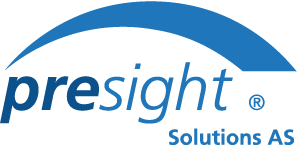Moving giant offshore drilling rigs is a high-stakes operation. Whether it’s a Jackup rig lifting itself out of the water or a Semisubmersible floating platform navigating the waves, relocating these massive structures involves unique challenges and risks. From a safety perspective, understanding the differences in risk between these two rig types is crucial for effective planning and barrier management. Let’s dive into the key distinctions.
Jackups: From Floating to Fixed: Jackups undergo a dramatic transformation. While being towed (“wet tow”), they act like a barge, vulnerable to flooding if watertight integrity is lost. But the real test comes during installation. As legs lower to the seabed and the hull jacks up, the focus shifts entirely to the ground beneath (foundation stability) and the strength of the legs and jacking system. The moments of seabed contact and preloading are phases of peak vulnerability.
Semisubmersibles: Always Afloat: These platforms maintain stability by adjusting ballast water, remaining buoyant throughout the move. Their main challenge is managing list, trim, and motion against waves and wind, primarily through the reliable operation of the ballast system. They don’t touch the seabed for support, but are sensitive to weather, ballast operations, and potentially Dynamic Positioning (DP) system performance.
Key Risk Hotspots & Safety Barriers
| Risk Hotspot | The Big Risk | Safety Focus / Key Barriers |
| Seabed Interaction Jackup (Exclusive) | Unpredictable seabed conditions causing punch-through, rapid settlement, or sliding during leg landing, jacking, or preloading. | Prevention: Comprehensive Site-Specific Assessment (SSA) & Leg Penetration Analysis (LPA). Detection: Real-time monitoring of leg loads, penetration, hull level, RPD. Control: Controlled preloading procedures (e.g., minimal air gap), emergency stop/differential jacking. |
| Jacking System Integrity Jackup (Exclusive) | Mechanical, electrical, or hydraulic failure of the jacking system leading to uncontrolled movement, tilting, or structural overstress. | Prevention: Rigorous design, maintenance (PMS), pre-move function tests. Detection: Monitoring RPD, motor loads/currents, leg speed/position. Control: Emergency stops, automatic brakes, mechanical rack chocks. |
| Ballast System Reliability Semisubmersible (Focus) | Malfunction (pumps, valves, controls) leading to unintended water transfer, causing unexpected list/trim and compromising stability. | Prevention: Robust design (redundancy), preventative maintenance, pre-move checks, clear procedures, competent operators. Detection: Control system monitoring, independent stability software, vigilant watchkeeping. Control: Emergency procedures, backup systems, manual overrides. |
| Dynamic Positioning (DP) Failure Semisubmersible (Relevant) | Loss of thrusters, power, sensors, or controls leading to loss of position/heading, potentially causing beam-sea exposure & excessive roll. | Prevention: Redundant design (DP2/DP3), FMEA, maintenance, pre-use checks, certified operators. Detection: System alarms, position reference cross-checking. Control: Operational procedures (WSOG), degraded mode protocols, emergency responses. |
| Transit Stability & Watertightness Both (Differing Focus) | Jackup: Loss of watertight integrity (hull openings/damage) leading to flooding. Semi: Severe weather causing excessive motions, green water, or insufficient air gap. |
Jackup: Prevention: Meticulous pre-tow inspections/securing, hull condition surveys. Detection: Regular tank soundings. Control: Damage control procedures. Semi: |
While core safety principles apply to all rig moves, the specific technical gremlins and critical safety barriers differ significantly between Jackups and Semisubmersibles. Jackup moves require an intense focus on the ground below and the lifting mechanics, whereas Semisubmersible moves depend heavily on the flawless performance of ballast and positioning systems while afloat. Recognizing these distinct risk landscapes is fundamental to ensuring these complex offshore maneuvers are completed safely.


